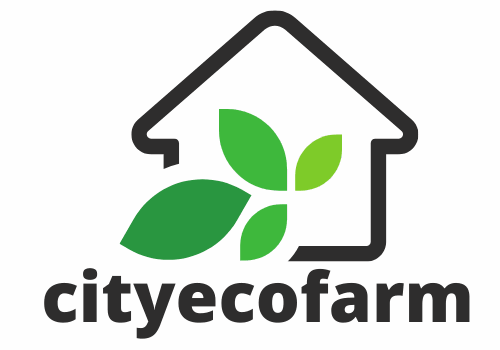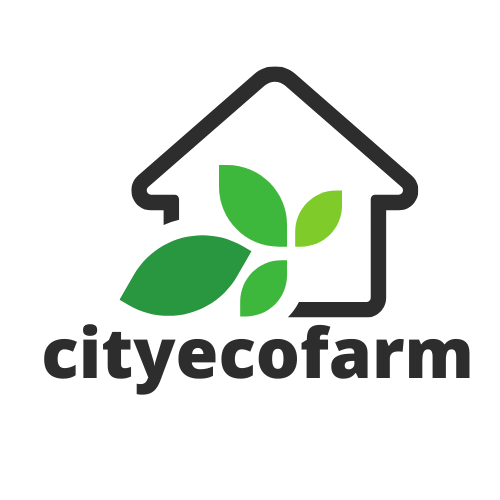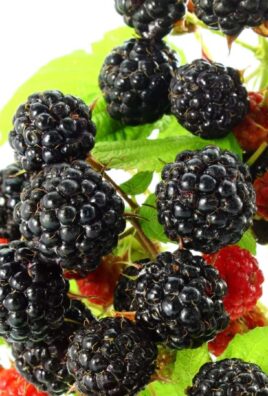Home cleaning simple tricks – that’s what we all crave, right? Let’s be honest, nobody *loves* spending hours scrubbing and polishing. We’d all rather be enjoying our sparkling clean homes, not creating them! But what if I told you that achieving a spotless haven doesn’t have to involve back-breaking labor or a cabinet full of harsh chemicals?
For centuries, people have been developing clever ways to keep their homes tidy. From ancient civilizations using natural herbs and oils for cleaning to modern-day innovations like microfiber cloths, the quest for a clean and healthy living space is a timeless pursuit. Think about your grandmother’s cleaning secrets – often simple, effective, and passed down through generations. These weren’t just about cleanliness; they were about creating a comfortable and welcoming environment for family and friends.
In today’s busy world, time is precious. That’s why I’m so excited to share these home cleaning simple tricks with you. These DIY hacks are designed to save you time, money, and energy, allowing you to reclaim your weekends and enjoy a cleaner, healthier home without the stress. We’ll explore easy-to-implement strategies, using everyday items you probably already have, to tackle common cleaning challenges. Get ready to transform your cleaning routine and discover the joy of a sparkling home, effortlessly!

DIY Home Cleaning Hacks: Sparkling Clean with Minimal Effort!
Hey there, fellow cleaning enthusiasts! I’m always on the lookout for ways to make cleaning less of a chore and more of a breeze. Over the years, I’ve stumbled upon some amazing DIY cleaning hacks that have seriously changed my cleaning game. I’m excited to share them with you! Get ready to ditch those harsh chemicals and embrace some simple, effective, and budget-friendly cleaning solutions.
Cleaning Your Microwave Like a Pro
Microwaves can get pretty gross, pretty quickly. Splattered food, lingering odors – it’s not a pretty sight. But fear not! This hack will have your microwave sparkling in minutes.
* The Power of Steam: This method uses the power of steam to loosen grime and make wiping a cinch.
* Lemon Freshness: Adding lemon not only helps to clean but also leaves a fresh, citrusy scent.
* No Harsh Chemicals: This is a completely natural and safe way to clean your microwave.
Step-by-Step Instructions:
1. Gather Your Supplies: You’ll need a microwave-safe bowl, water, a lemon (or vinegar), and a clean sponge or cloth.
2. Prepare the Cleaning Solution: Fill the microwave-safe bowl with about 1 cup of water. Cut the lemon in half and squeeze the juice into the water. Then, drop the lemon halves into the bowl as well. If you don’t have a lemon, you can substitute with 2 tablespoons of white vinegar.
3. Microwave the Solution: Place the bowl in the microwave and heat it on high for 3-5 minutes. You want the water to boil and create steam inside the microwave.
4. Let it Sit: Once the timer goes off, don’t open the microwave immediately! Let it sit for another 5 minutes. This allows the steam to further loosen the grime.
5. Wipe it Clean: Carefully remove the bowl (it will be hot!). Use your sponge or cloth to wipe down the inside of the microwave. The grime should come off easily. For stubborn spots, you might need to scrub a little.
6. Final Touches: Wipe down the microwave door and the outside. Enjoy your sparkling clean and fresh-smelling microwave!
Unclogging Drains Naturally
Clogged drains are a common household problem, and those chemical drain cleaners can be harsh and damaging. Here’s a natural and effective way to unclog your drains using ingredients you probably already have at home.
* Baking Soda and Vinegar Power: This dynamic duo creates a fizzing action that helps to break down clogs.
* Safe and Eco-Friendly: This method is much safer for your pipes and the environment than chemical drain cleaners.
* Preventative Maintenance: You can use this method regularly to prevent clogs from forming in the first place.
Step-by-Step Instructions:
1. Clear the Standing Water: If there’s standing water in the sink or tub, try to remove as much of it as possible.
2. Pour in the Baking Soda: Pour about 1 cup of baking soda down the drain.
3. Add the Vinegar: Immediately follow the baking soda with 1 cup of white vinegar.
4. Let it Fizz: The mixture will start to fizz and bubble. Let it sit for about 30 minutes. This allows the baking soda and vinegar to work their magic and break down the clog.
5. Flush with Hot Water: After 30 minutes, flush the drain with hot water for several minutes.
6. Repeat if Necessary: If the drain is still clogged, repeat the process. For particularly stubborn clogs, you might need to use a plunger after the baking soda and vinegar treatment.
Cleaning Your Shower Head for Better Water Pressure
Over time, shower heads can become clogged with mineral deposits, leading to reduced water pressure and an uneven spray. This simple hack will restore your shower head to its former glory.
* Vinegar Soak: Vinegar is a natural descaler that effectively removes mineral buildup.
* Easy and Affordable: This method requires minimal effort and only uses vinegar.
* Improved Shower Experience: Enjoy a more powerful and consistent shower spray.
Step-by-Step Instructions:
1. Gather Your Supplies: You’ll need a plastic bag (a Ziploc bag works well), white vinegar, a rubber band or twist tie, and a toothbrush or small scrub brush.
2. Fill the Bag with Vinegar: Pour enough white vinegar into the plastic bag to completely submerge the shower head.
3. Secure the Bag: Carefully place the bag over the shower head, ensuring that the shower head is fully immersed in the vinegar. Use the rubber band or twist tie to secure the bag to the shower head.
4. Soak Overnight: Let the shower head soak in the vinegar overnight (or for at least several hours). This allows the vinegar to dissolve the mineral deposits.
5. Remove the Bag and Rinse: Remove the bag and discard the vinegar. Turn on the shower and let the water run for a few minutes to flush out any remaining vinegar and loosened debris.
6. Scrub if Necessary: If there are still some stubborn deposits, use a toothbrush or small scrub brush to gently scrub them away.
7. Enjoy Your Improved Shower: Enjoy your shower with improved water pressure and a more even spray!
Making Your Own All-Purpose Cleaner
Why spend a fortune on store-bought all-purpose cleaners when you can easily make your own with just a few simple ingredients? This DIY cleaner is effective, safe, and smells amazing!
* Simple Ingredients: This recipe uses ingredients you likely already have in your pantry.
* Customizable Scent: You can customize the scent by using different essential oils.
* Effective and Safe: This cleaner is effective on a variety of surfaces and is safe for your family and pets.
Step-by-Step Instructions:
1. Gather Your Supplies: You’ll need an empty spray bottle, white vinegar, water, and your favorite essential oils (optional). I personally love using lemon, lavender, or tea tree oil.
2. Combine the Ingredients: In the spray bottle, combine equal parts white vinegar and water. For example, you could use 1 cup of vinegar and 1 cup of water.
3. Add Essential Oils (Optional): If you’re using essential oils, add about 10-20 drops to the spray bottle.
4. Shake Well: Shake the spray bottle well to combine all the ingredients.
5. Use and Enjoy: Your all-purpose cleaner is ready to use! Simply spray it on surfaces and wipe clean with a cloth.
Important Note: While vinegar is a great cleaner, it’s not suitable for all surfaces. Avoid using it on marble, granite, or other natural stone surfaces, as it can damage them.
Cleaning Grout with Baking Soda Paste
Dirty grout can make your entire bathroom or kitchen look dingy. This simple baking soda paste will help you restore your grout to its original brightness.
* Natural Abrasive: Baking soda is a gentle abrasive that helps to scrub away dirt and grime.
* Effective on Stains: This paste is effective on a variety of grout stains.
* Budget-Friendly: This is a very affordable way to clean your grout.
Step-by-Step Instructions:
1. Gather Your Supplies: You’ll need baking soda, water, a small bowl, an old toothbrush or grout brush, and a sponge or cloth.
2. Make the Paste: In the small bowl, mix baking soda and water to form a thick paste. You want the paste to be thick enough to stick to the grout.
3. Apply the Paste: Apply the baking soda paste to the grout lines.
4. Let it Sit: Let the paste sit on the grout for about 10-15 minutes. This allows the baking soda to loosen the dirt and grime.
5. Scrub the Grout: Use the old toothbrush or grout brush to scrub the grout lines.
6. Rinse and Wipe Clean: Rinse the grout with water and wipe clean with a sponge or cloth.
7. Repeat if Necessary: For particularly stubborn stains, you might need to repeat the process.
Freshening Up Your Mattress
We spend a lot of time on our mattresses, so it’s important to keep them clean and fresh. This simple hack will help you eliminate odors and keep your mattress feeling like new.
* Baking Soda Deodorizer: Baking soda is a natural odor absorber.
* Essential Oil Infusion: Adding essential oils will leave your mattress smelling fresh and clean.
* Simple and Effective: This is a simple and effective way to freshen up your mattress.
Step-by-Step Instructions:

Conclusion
So, there you have it! Mastering these simple home cleaning tricks isn’t just about tidying up; it’s about reclaiming your time, saving money, and creating a healthier, happier living space. We’ve explored how everyday items and a little know-how can transform your cleaning routine from a chore into a breeze. From banishing stubborn stains to revitalizing tired surfaces, these DIY solutions offer a powerful alternative to harsh chemicals and expensive store-bought products.
But why is this a must-try? Because it’s empowering! You’re taking control of your cleaning process, understanding exactly what goes into your cleaning solutions, and minimizing your environmental impact. Plus, the satisfaction of seeing a sparkling clean home achieved with your own ingenuity is truly rewarding.
Don’t be afraid to experiment and adapt these tricks to suit your specific needs and preferences. For instance, if you’re sensitive to vinegar, try using lemon juice as a substitute in many of the cleaning solutions. For a refreshing scent, add a few drops of your favorite essential oil to your homemade cleaning sprays. Lavender, lemon, and tea tree oil are all excellent choices for their antibacterial and aromatic properties. You can also infuse your cleaning vinegar with citrus peels for a more pleasant fragrance and added cleaning power. Simply place citrus peels in a jar, cover with white vinegar, and let it steep for a few weeks before straining and using.
Consider using microfiber cloths instead of paper towels for dusting and wiping surfaces. Microfiber cloths are more effective at trapping dust and dirt, and they’re reusable, making them a more sustainable option. For cleaning grout, try using an old toothbrush dipped in baking soda paste. The bristles will help scrub away stubborn grime.
These home cleaning tricks are not just about cleaning; they’re about creating a healthier and more sustainable lifestyle.
We’re confident that once you try these simple yet effective methods, you’ll wonder why you didn’t discover them sooner. They’re easy to implement, cost-effective, and environmentally friendly. They offer a fantastic way to maintain a clean and healthy home without relying on harsh chemicals or breaking the bank.
So, what are you waiting for? Roll up your sleeves, gather your supplies, and give these DIY home cleaning tricks a try. We’re eager to hear about your experiences! Share your before-and-after photos, your favorite variations, and any other tips you’ve discovered in the comments below. Let’s build a community of clean-home enthusiasts who are passionate about sustainable and effective cleaning practices. Your insights could inspire others to embrace these simple yet powerful methods and transform their own cleaning routines. Let us know which of these home cleaning simple tricks worked best for you!
Frequently Asked Questions (FAQ)
Q: Are these DIY cleaning solutions safe for all surfaces?
A: While most of these DIY cleaning solutions are generally safe for a wide range of surfaces, it’s always a good idea to test them in an inconspicuous area first, especially on delicate or sensitive materials like wood, marble, or granite. For example, vinegar, while a powerful cleaner, can etch marble and should be avoided on natural stone surfaces. Similarly, lemon juice can be acidic and may damage certain finishes. Always read the manufacturer’s instructions for your surfaces and appliances before using any cleaning product, DIY or store-bought. When in doubt, err on the side of caution and use a gentler cleaning solution or consult with a professional cleaner.
Q: How long do these DIY cleaning solutions last?
A: The shelf life of DIY cleaning solutions can vary depending on the ingredients used. Solutions made with water and baking soda are best used immediately, as the baking soda can settle over time. Vinegar-based solutions can typically last for several months when stored in a cool, dark place. Solutions containing essential oils may also have a longer shelf life, as essential oils have natural preservative properties. To maximize the shelf life of your DIY cleaning solutions, store them in airtight containers and label them with the date they were made. If you notice any changes in color, odor, or consistency, it’s best to discard the solution and make a fresh batch.
Q: Can I use essential oils other than lavender, lemon, and tea tree oil?
A: Absolutely! You can customize your DIY cleaning solutions with your favorite essential oils. Many essential oils have antibacterial, antiviral, and antifungal properties, making them excellent additions to homemade cleaners. Some popular choices include eucalyptus, peppermint, rosemary, and orange essential oils. When using essential oils, be sure to use pure, therapeutic-grade oils and follow dilution guidelines. A general rule of thumb is to use 10-20 drops of essential oil per cup of cleaning solution. Also, be mindful of any allergies or sensitivities you or your family members may have to certain essential oils.
Q: Are these DIY cleaning solutions safe for pets and children?
A: While these DIY cleaning solutions are generally safer than many commercial cleaners, it’s still important to take precautions when using them around pets and children. Keep cleaning solutions out of reach of children and pets, and never leave them unattended while cleaning. When cleaning floors, allow them to dry completely before allowing pets or children to walk on them. If you’re concerned about potential irritants, consider using milder ingredients like castile soap or diluted vinegar. Always supervise children when they are helping with cleaning and teach them about the importance of safety.
Q: What’s the best way to clean a really dirty oven without harsh chemicals?
A: Cleaning a really dirty oven without harsh chemicals can be done effectively with baking soda and vinegar. First, remove the oven racks and soak them in hot, soapy water. Then, make a paste of baking soda and water and spread it all over the inside of the oven, avoiding the heating elements. Let the paste sit overnight. The next day, spray the baking soda paste with white vinegar. The vinegar will react with the baking soda, creating a fizzing action that helps to loosen the grime. Finally, wipe away the paste with a damp cloth. You may need to scrub stubborn areas with a sponge or scraper. For extra cleaning power, you can also add a few drops of dish soap to the baking soda paste.
Q: How can I get rid of hard water stains in my bathroom?
A: Hard water stains can be a real nuisance in the bathroom, but they can be effectively removed with vinegar. For showerheads, fill a plastic bag with white vinegar and secure it around the showerhead with a rubber band, ensuring that the showerhead is submerged in the vinegar. Let it soak for a few hours or overnight. For faucets and other surfaces, soak a cloth in white vinegar and place it over the hard water stains. Let it sit for a few minutes, then scrub with a non-abrasive sponge. For stubborn stains, you can also make a paste of baking soda and vinegar and apply it to the affected area. Let it sit for a few minutes, then scrub and rinse.
Q: Can I use these DIY cleaning solutions in my dishwasher or washing machine?
A: Yes, you can use some of these DIY cleaning solutions in your dishwasher and washing machine. For your dishwasher, you can add a cup of white vinegar to the bottom of the dishwasher before running a cycle to help remove hard water stains and freshen the machine. For your washing machine, you can add a cup of baking soda to the drum along with your regular detergent to help boost its cleaning power. You can also run an empty cycle with hot water and a cup of white vinegar to clean and deodorize your washing machine. However, always check your appliance’s manual before using any DIY cleaning solutions to ensure that they are compatible and won’t damage your machine.





Leave a Comment